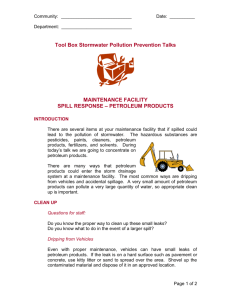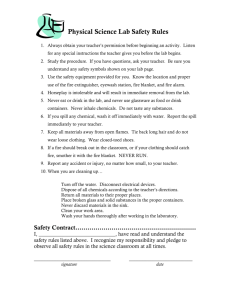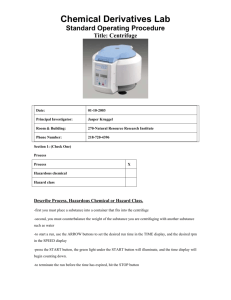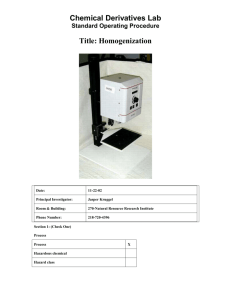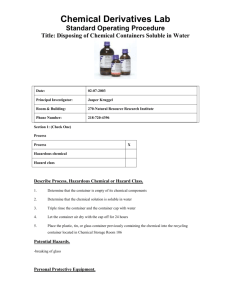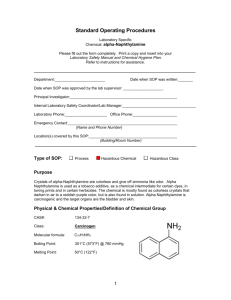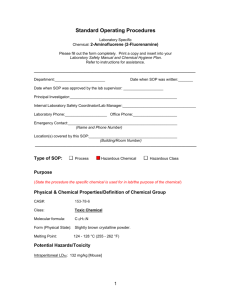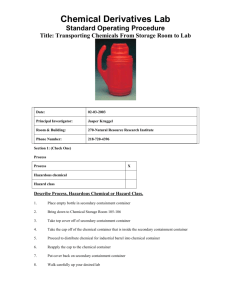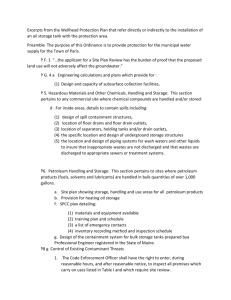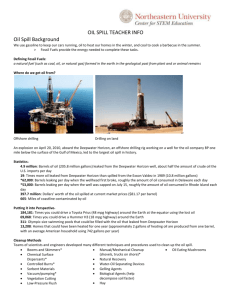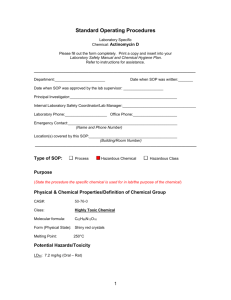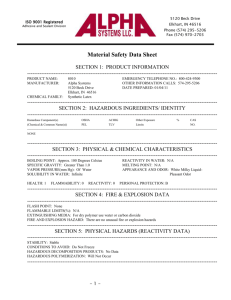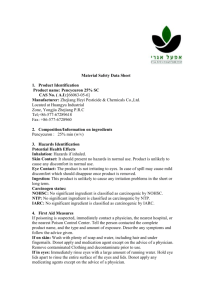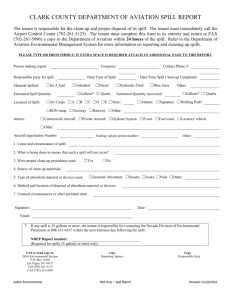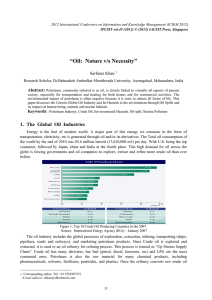Tool Box Stormwater Pollution Prevention Talks
advertisement
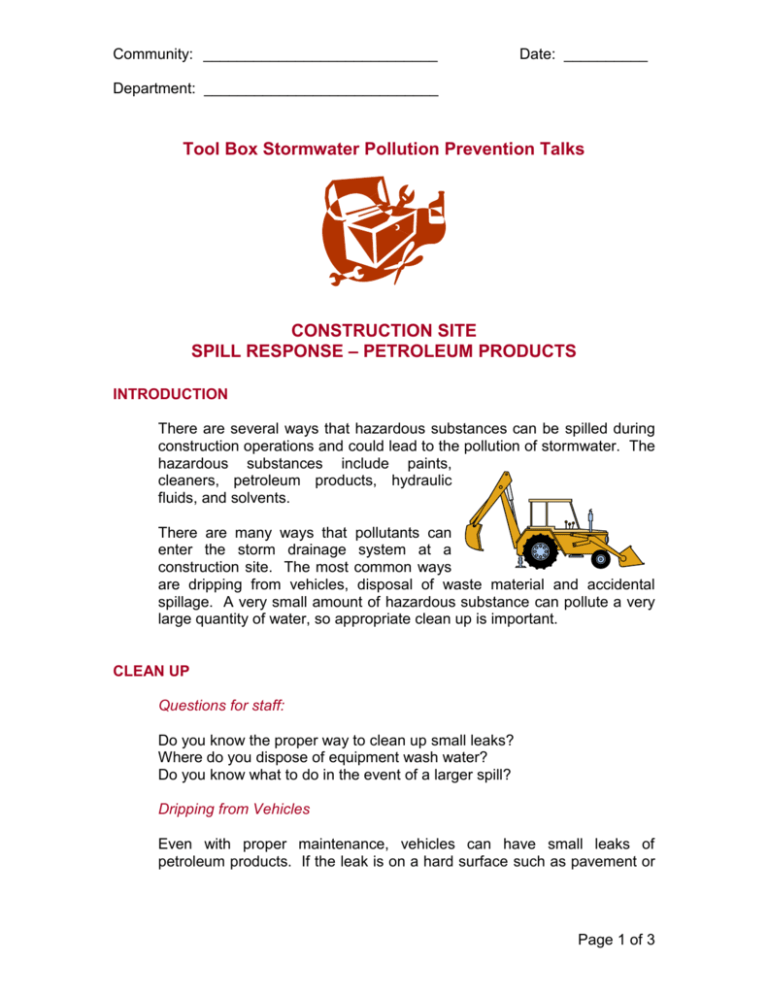
Community: ____________________________ Date: __________ Department: ____________________________ Tool Box Stormwater Pollution Prevention Talks CONSTRUCTION SITE SPILL RESPONSE – PETROLEUM PRODUCTS INTRODUCTION There are several ways that hazardous substances can be spilled during construction operations and could lead to the pollution of stormwater. The hazardous substances include paints, cleaners, petroleum products, hydraulic fluids, and solvents. There are many ways that pollutants can enter the storm drainage system at a construction site. The most common ways are dripping from vehicles, disposal of waste material and accidental spillage. A very small amount of hazardous substance can pollute a very large quantity of water, so appropriate clean up is important. CLEAN UP Questions for staff: Do you know the proper way to clean up small leaks? Where do you dispose of equipment wash water? Do you know what to do in the event of a larger spill? Dripping from Vehicles Even with proper maintenance, vehicles can have small leaks of petroleum products. If the leak is on a hard surface such as pavement or Page 1 of 3 concrete, use kitty litter or sand to spread over the area. Shovel up the contaminated material and dispose of it in an approved location. If the leak occurs on a gravel surface, immediately use a shovel to collect the contaminated soil. If left, it can quickly contaminate a larger area. Again, dispose of the contaminated material in an approved location. Disposal of Wash Water Construction site workers have been observed disposing of wash water in catch basins, or in ditches, creeks, rivers, or streams. This directly contaminates water resources and is not permitted under any circumstances. Wash water should be disposed of down the sanitary sewer or placed in a holding tank for proper disposal. If you observe an individual disposing of wash waters in an inappropriate way, immediately tell your supervisor or contact your local Health Department. Spills If the spill is greater than 25 gallons, it must be reported to Ohio EPA (800-282-9378), the local fire department, and the local emergency planning committee. These numbers should be posted in the maintenance facility. If the spill is less than 25 gallons, then all contaminated soil should be collected and disposed of in an approved location. POINTS TO REMEMBER Fast response to a spill can limit the amount of contamination and reduce pollution. On a hard surface use kitty litter or sand to clean up petroleum spills. Spills greater than 25 gallons must be reported. Never pour wastewater into catch basins, ditches, creeks, rivers, or streams. Report any suspicious activity. Page 2 of 3 ATTENDED BY: __________________________________ __________________________________ __________________________________ __________________________________ __________________________________ __________________________________ __________________________________ __________________________________ __________________________________ __________________________________ __________________________________ Page 3 of 3
